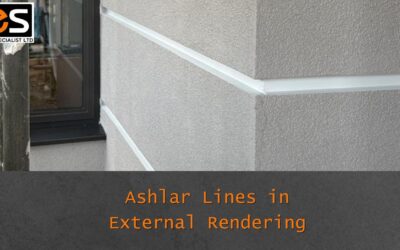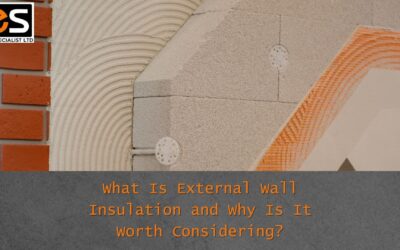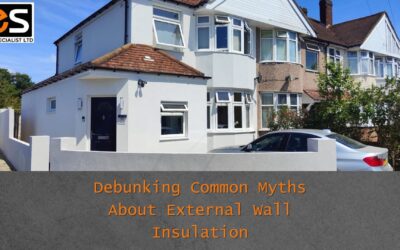External vs. Internal Wall Insulation: A Guide. Insulating your property’s walls is crucial for improving the energy efficiency of your home, maintaining thermal comfort, soundproofing and enhancing its appearance. Both external and internal insulation methods are available and come with their benefits and drawbacks, but which one should you choose? What are the pros and cons of each approach? After years of addressing these questions from numerous clients, we’ve decided to tackle this topic in today’s article.
In this blog, we’ll explore the main differences between external and internal wall insulation, discuss the benefits and drawbacks of each, and help you determine which option best suits your needs.
Content Page
- What Is Wall Insulation and Why Is It Important
- What is External Wall Insulation?
- What is Internal Wall Insulation?
- External vs. Internal Wall Insulation: A Guide
- Which Option is Right for You?
What Is Wall Insulation and Why Is It Important
Wall insulation is an excellent building material that adds a thermal barrier to the walls of your property, slowing heat and sound transfer. In the UK, where winters can be particularly long and harsh, effective wall insulation is essential for regulating indoor temperatures, minimising heat loss, reducing energy bills, and lowering your carbon footprint. Additionally, wall insulation helps with noise reduction and enhances the overall energy efficiency of your home, making it a crucial addition to every property.
Wall insulation can be applied internally, externally, or within the cavity, depending on your wall type. In the UK, there are two most common types of walls: cavity walls and solid walls. Cavity walls are commonly found in homes built post-1920, while solid walls are more common in homes built pre-1920. In this article, we will specifically focus on solid wall insulation.
What is External Wall Insulation (EWI)?
EWI involves attaching insulation to the exterior walls of your property and covering it with a protective render. This system uses two layers: an insulating layer and an outer layer made from either mineral or synthetic render. Common materials in the UK include mineral wool, expanded polystyrene, and phenolic foam. EWI creates a thermal envelope around your home, significantly reducing heat transfer, keeping it cooler in summer and warmer in winter.
Pros of EWI
- Enhanced Energy Efficiency: Seals cracks and gaps, reducing drafts and improving energy efficiency.
- No Interior Disruption: Installed on the exterior, EWI doesn’t interfere with household activities or reduce room size.
- Moisture Control: Minimises inner wall condensation and dampness, promoting a healthier indoor environment.
- Weatherproofing and Soundproofing: Adds protection against harsh weather and reduces noise pollution.
- A Fresh and Modern Appearance: Offers various finishes.
- Increased Durability: Protects brickwork, increasing wall lifespan and reducing maintenance needs.
Cons of EWI
- Initial Investment: Higher upfront cost compared to other insulation methods.
- Potential Cold Bridges: Improper sealing around windows and doors can compromise insulation.
- Altered Appearance: Changes the exterior look and may require planning permission, especially in conservation areas or for listed buildings.
- Structural Soundness Required: Not suitable for properties with structurally unsound outer walls.

What is Internal Wall Insulation (IWI)?
Internal wall insulation adds insulation to the inside walls of your property, typically used when external insulation isn’t possible. This method is essential for historic buildings under conservation protection or properties with limited ownership rights. It is the only viable solution to prevent energy loss from within the building in such cases.
Pros of IWI
- Cost-Effective Solution: Internal wall insulation tends to be more affordable than external options, making it an attractive choice for many homeowners.
- Maintains Exterior Appearance: Perfect for properties in Conservation Areas, internal wall insulation preserves the original exterior look, complying with strict regulations while boosting energy efficiency.
- Improved Soundproofing: Adding insulation to the interior walls enhances the soundproofing of your home, creating a quieter and more peaceful living environment.
Cons of IWI
- Space Reduction: Installing internal insulation takes up valuable space inside your property, which can be a significant downside for smaller homes.
- Disruptive Installation: The installation process can be quite invasive, often requiring the removal and reattachment of fixtures, causing inconvenience to occupants.
- Condensation Risk: Internal insulation can increase the risk of condensation within the walls, potentially leading to mould growth and affecting indoor air quality.
- No Waterproof Layer: Unlike external insulation, IWI does not provide an extra layer of waterproofing, leaving the property more vulnerable to moisture ingress.
- Thermal Bridge Challenges: Eliminating thermal bridges is challenging with internal insulation, leading to potential heat loss through gaps and uneven room temperatures.
External vs. Internal Wall Insulation: A Guide
When deciding between External Wall Insulation and Internal Wall Insulation, several key factors come into play. Generally, EWI tends to offer more advantages compared to IWI. EWI not only reduces the chances of damp issues, avoids disruption to your household during installation and has a lower risk of thermal bridging, but it also preserves internal floor space and can significantly improve the external appearance of your home, potentially increasing its market value.
However, EWI comes with a higher initial cost. Although IWI is initially cheaper, the additional costs associated with redecorating and replacing fittings, skirting boards, and other elements can make it more expensive in the long run. IWI often requires rewiring and relocating light switches, which can cause further disruption during installation.

Which Option is Right for You?
Both EWI and IWI are effective for enhancing a property’s thermal performance. The best choice depends on various factors including individual needs, the building’s technical specifications, aesthetic preferences, and budget considerations. While EWI is recommended in most cases for its comprehensive benefits, IWI remains a viable option where external solutions are not feasible.
Regardless of the method chosen, it is crucial to use appropriate materials and professional installation to ensure long-term efficiency and comfort. Factors such as the location, installation cost, age of the property, and R-value should also be considered.
Consulting with an insulation expert can help you determine the best solution for your home, ensuring a professional and effective installation.

At EWI Specialist, we deliver expert assessments and offer detailed, tailored information to meet the unique needs of your home. Don’t hesitate to contact us to explore how house insulation can transform your property, enhancing both your comfort and energy efficiency.










